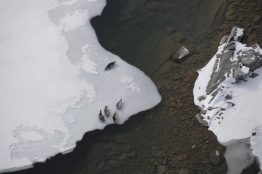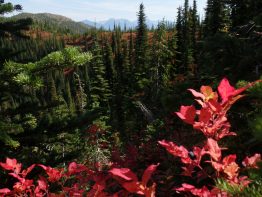Just over one-third of the world’s 246 longest rivers remain free-flowing, according to a new study published May 8 in Nature. Dams and reservoirs are drastically reducing the diverse benefits that healthy rivers provide to people and nature across the globe. A team of 34 international researchers from McGill University, World Wildlife Fund, the University of Washington and other institutions assessed the connectivity status of 12 million kilometers of rivers worldwide, providing the first-ever global assessment of the location and extent of the planet’s remaining free-flowing rivers.
Read more at UW News »Chemical records in teeth confirm elusive Alaska lake seals are one of a kind
Hundreds of harbor seals live in Iliamna Lake, the largest body of freshwater in Alaska and one of the most productive systems for sockeye salmon in the Bristol Bay region. These lake seals are a robust yet highly unusual and cryptic posse. Although how the seals first colonized the lake remains a mystery, it is thought that sometime in the distant past, a handful of harbor seals likely migrated from the ocean more than 50 miles (80 kilometers) upriver to the lake, where they eventually grew to a consistent group of about 400.
Read more at UW News »UW tool maps huckleberries to help find endangered grizzly bears
A team of researchers from the University of Washington and U.S. Geological Survey have made used satellite images of Glacier National Park, to examine patterns in huckleberry plants that turn a brilliant red color each fall. Tracking where huckleberry plants live now — and where they may move under climate change — would help biologists predict where grizzly bears will also be found.
Read more at UW Today »Return of the wolves: How deer escape tactics help save their lives
Washington’s deer populations have begun to change their behavior to evade ever-increasing numbers of their most cunning predator, the gray wolf. Intriguingly, the escape tactics used by the two more common species – the mule deer and the white-tailed deer – vary greatly. Researchers from UW College of the Environment and other institutions found that when in areas populated by gray wolves, mule deer are spending more time away from roads, at higher elevations and in rockier landscapes than previously observed.
Read more at UW News »Q&A: New Washington Sea Grant director brings love of learning, experience across sectors
Russell Callender spent nearly two decades working on coastal science, policy and management issues at the National Oceanic and Atmospheric Administration’s headquarters near Washington, D.C. But throughout his tenure at the nation’s capital, he kept his eye on a position at an organization in the other Washington. When he saw the job posting last summer to lead Washington Sea Grant at the University of Washington, it took Callender all of about two minutes to start working on his application.
Read more at UW News »





